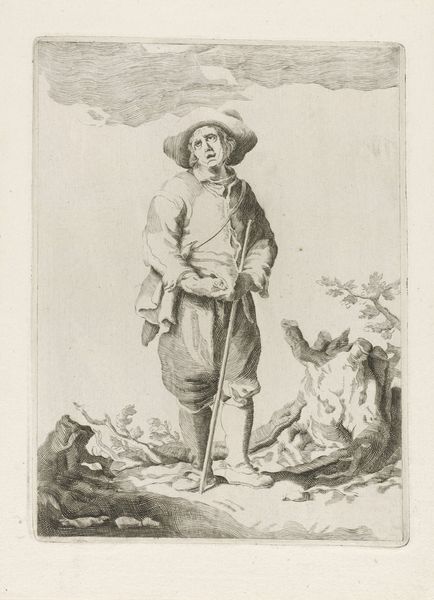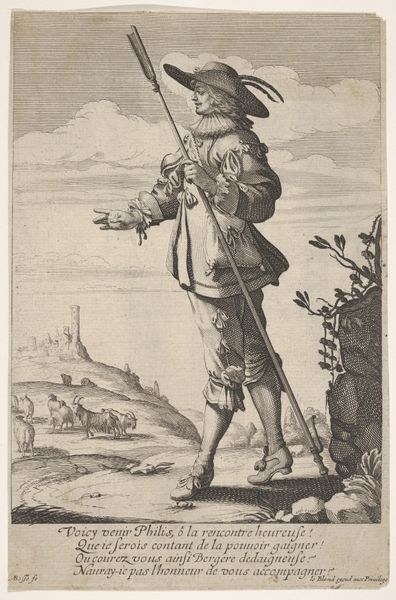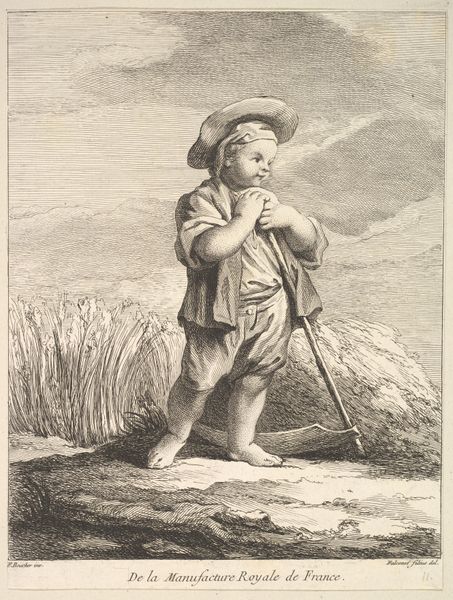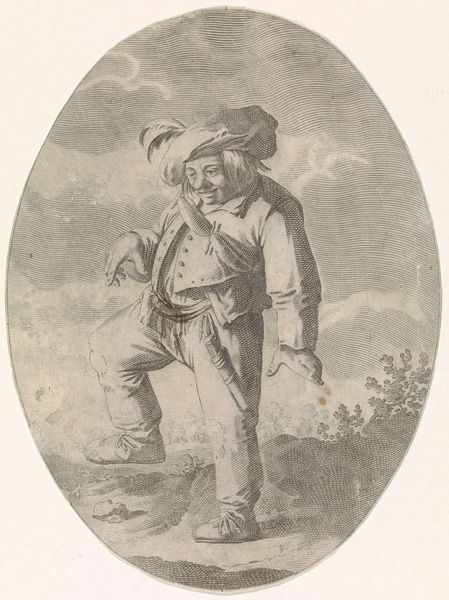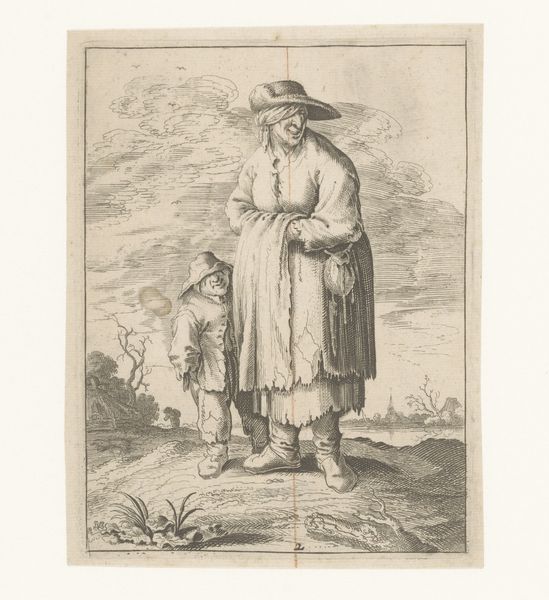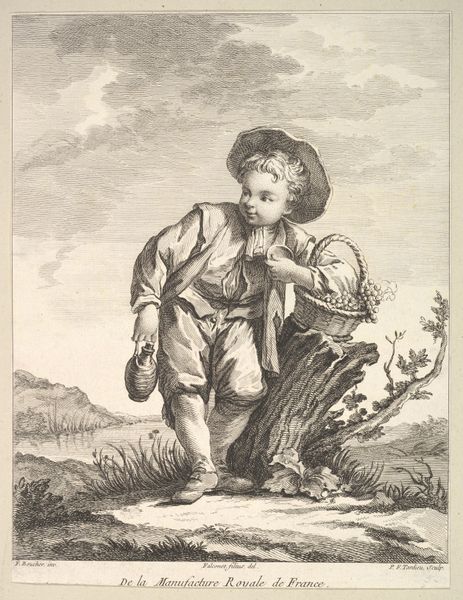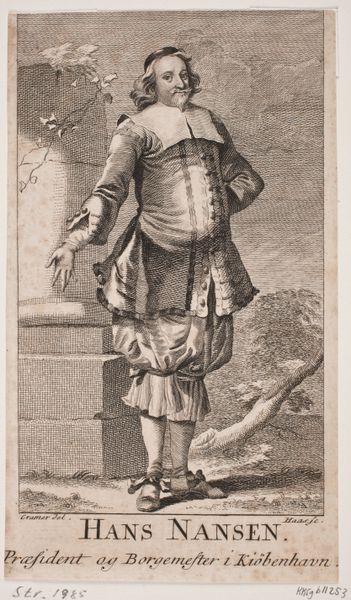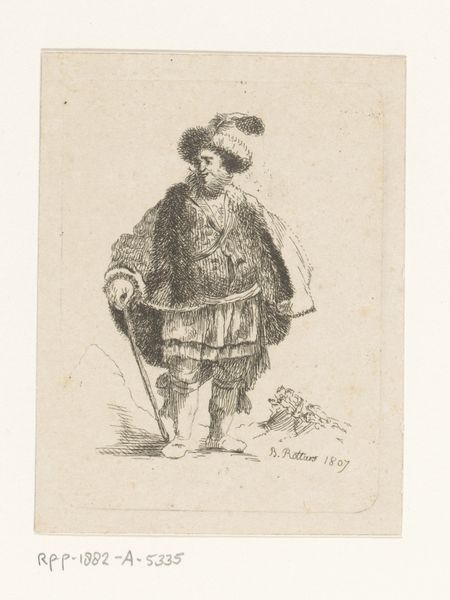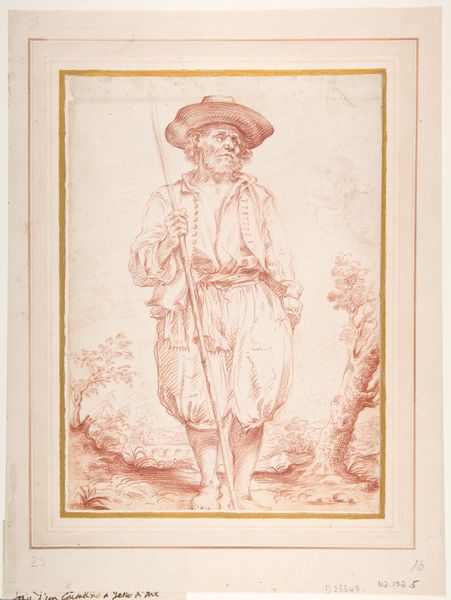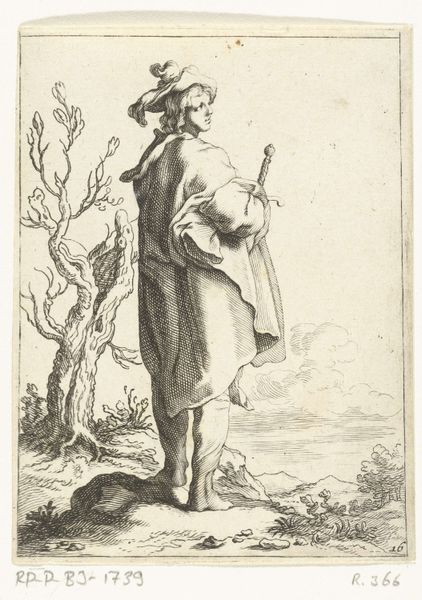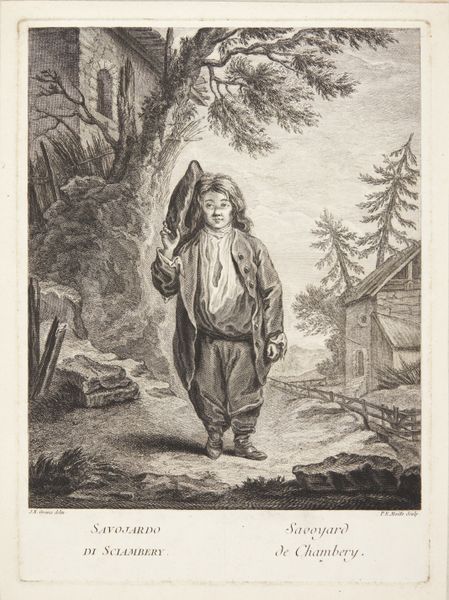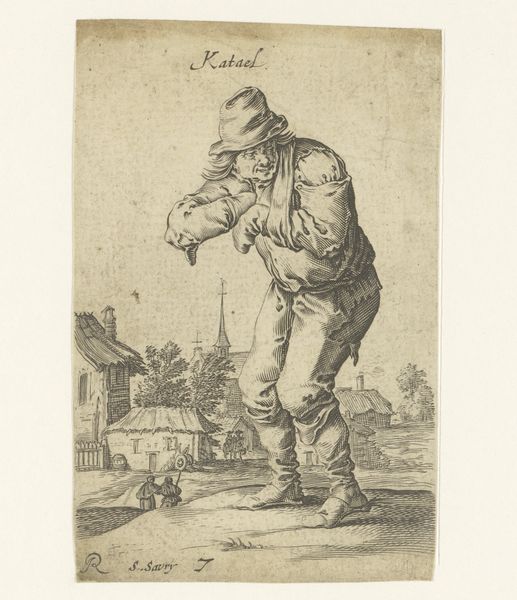
print, engraving
#
baroque
# print
#
old engraving style
#
landscape
#
figuration
#
genre-painting
#
engraving
Dimensions: height 397 mm, width 246 mm
Copyright: Rijks Museum: Open Domain
Curator: This engraving, dating from approximately 1741 to 1780, is entitled "Boer bij een omgevallen mand met eieren," or "Farmer with a Fallen Basket of Eggs" in English, by L. Angélique Martinet. Editor: My immediate impression is melancholy. The man’s posture, the overturned basket... a clear visual signifier of misfortune. It invites introspection about fragility. Curator: Observe the lines – the engraver's marks meticulously creating tonal variations. Each stroke represents labor, translating an original painting into a print, accessible for wider distribution and consumption. The very process alters the "aura," doesn't it? Editor: Yes, but also consider the enduring symbolism! Eggs have always been associated with potential, fertility, life itself. Their fragility mirrors our own precarious existence. The overturned basket becomes a powerful symbol of ruined potential. Curator: And this image wouldn’t exist without material infrastructure. Think about the paper, the ink, the tools—the workshops facilitating this reproduction and distribution. Each impression spreads a particular visual, ideological...currency, shall we say? Editor: I find it interesting that the figure seems to contemplate something beyond the eggs. The clouds overhead, those distant birds—they seem to reflect on time, destiny, something beyond his immediate misfortune with the spilled basket of eggs. Curator: I am compelled by that material reality too, in a more grounded sense. Where were these engravings sold? Who could afford them? How did this circulate among different social strata and what purposes did it serve? Were these images framed as decoration, as moral lesson, or some combination? Editor: Perhaps it reflects broader anxieties around sustenance and livelihood in the period it was made. The Baroque style emphasizes emotional engagement—it asks us to empathize with the figure, to project ourselves into this moment of crisis, with symbols readily decoded at the time. Curator: Seeing it through both lenses allows a greater comprehension of Martinet's intention as not just replicating a picture, but contributing to this discourse of everyday struggles. I hadn’t initially considered those aspects. Editor: And for me, exploring the means of that visual communication gives additional layers to the emotional narrative. It helps deepen our sense of its purpose as a kind of visual and social commentary on 18th century anxieties and a shared symbol of enduring importance.
Comments
No comments
Be the first to comment and join the conversation on the ultimate creative platform.
